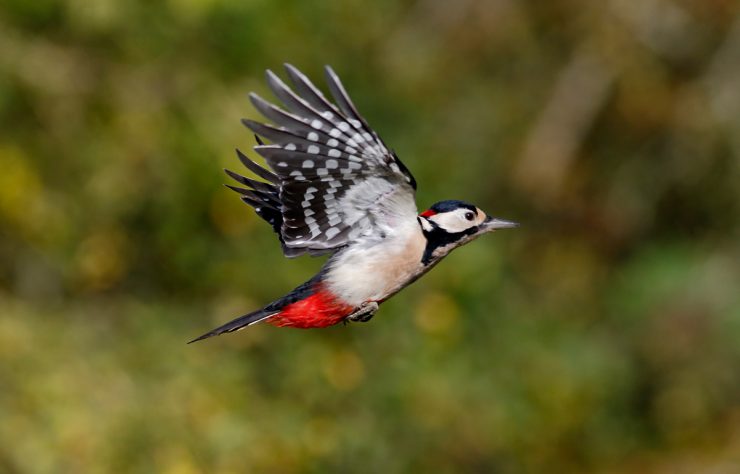The Great spotted Woodpecker is classified under the Dendrocopus Major in the family of Picidae. These birds are found throughout Europe and Northern Asia. The size of these birds range from 23 to 26 centimetres and has a wingspan of 38 to 44 centimetres. The upperparts of these birds tend to be black in colour while the white colour persists on the sides of its face and near the neck.
These birds also have a blackline that runs from its shoulder to halfway along its breast and returns to the nape. These birds have a black stripe extending from the bill and runs below the eye to meet the latter part. The shoulders of these birds have a large white patch. The flight feathers of these birds are black and white in colour. It is often seen that when the short tail of these animals are outspread the outer tail feathers are visible of these animals which acts as a support for them in climbing. These birds have a dull white in colour in its underparts while their abdomen and their undertails tend to be crimson in colour. There is a crimson colour spot on the top of their nape which is especially seen in the male birds which is quite absent in the females and the younger breeds.
The younger breeds have crimson on the top of the head and which is present between the bill and in the centre of crown. The bird is easily identifiable as it has a large white patch over its shoulder. It is often identified by its voice of mechanical drumming and has a vibrating rattle which is reproduced by repeated blows of its strong bill upon a trunk or a branch. The voices of these birds are quite audible from a great distance which also does depend upon the wind conditions and on the condition of the wood too.
These birds also have several living subspecies. They are the Syrian Woodpecker and the White Winged Woodpecker. These birds are found to be in woodlands and parks. It is usually found that these birds usually hop rather than climb the trees with a foot moving forward before the other. These birds feed on arthropods which consist of larvae of moths and beetles. These birds often extract its prey from the crevices with the tip of its sticky tongue. The heartwood and the sapwood are the nesting trees chosen by these birds. The nests of these birds are made by both the sexes. The eggs of these birds are in the size of 26 millimetres by 19 millimetres and both of these birds also do feed their young ones. The breeding season of these birds start from mid April and 3 to 8 eggs are laid during this period. The incubation of the eggs takes 10 to 16 days and the fledge days for the younger breeds vary from 18 to 21 days.








